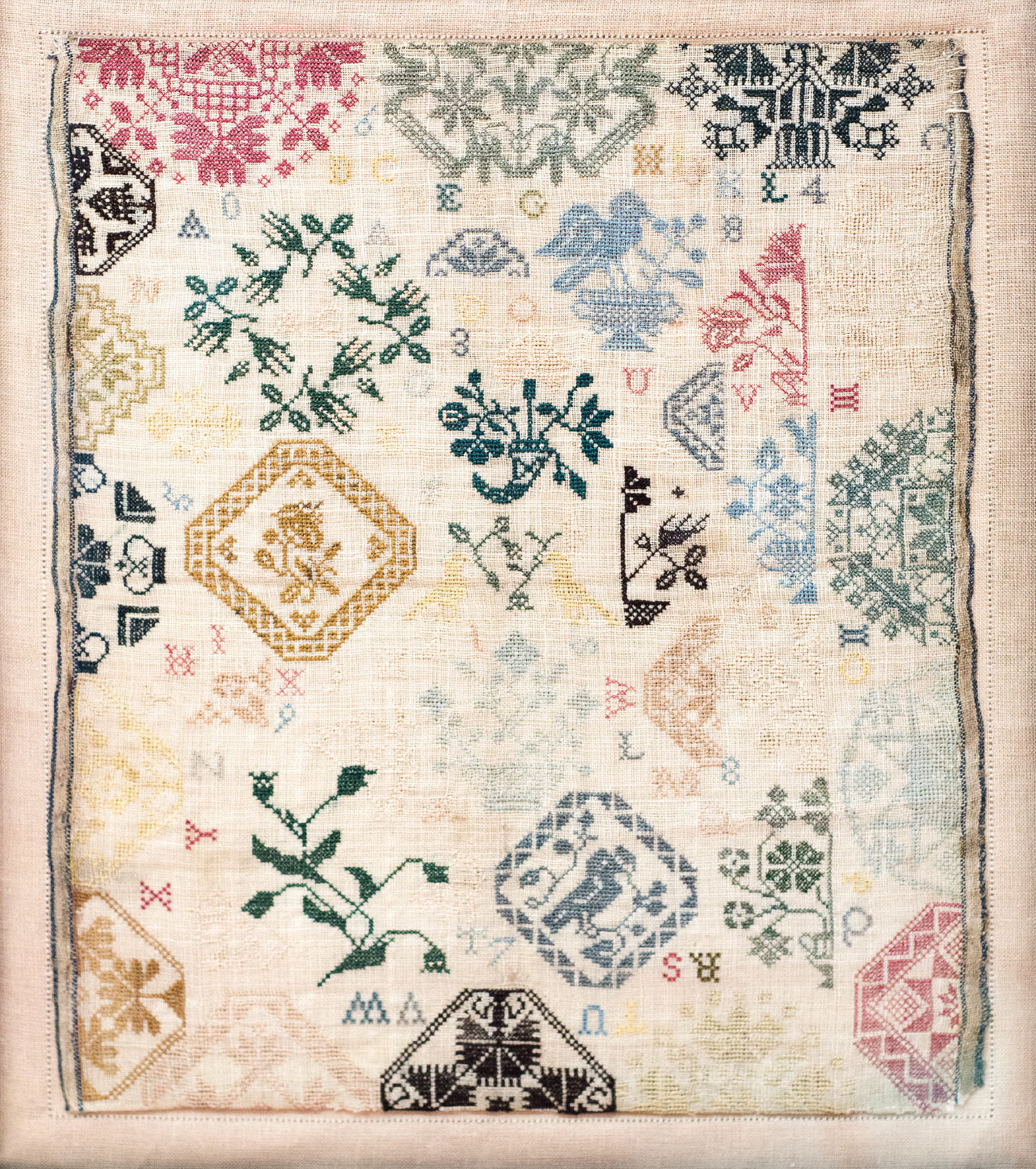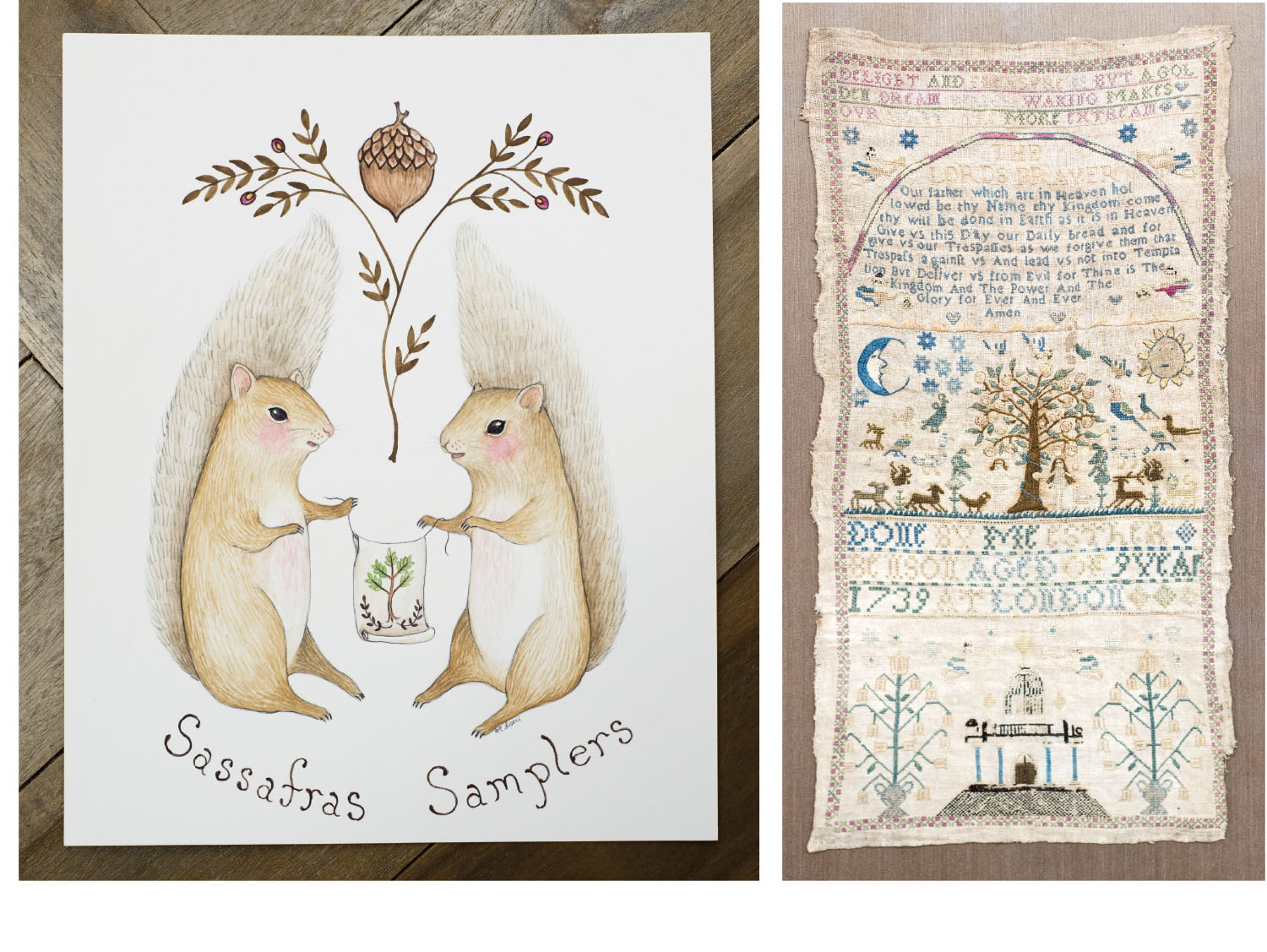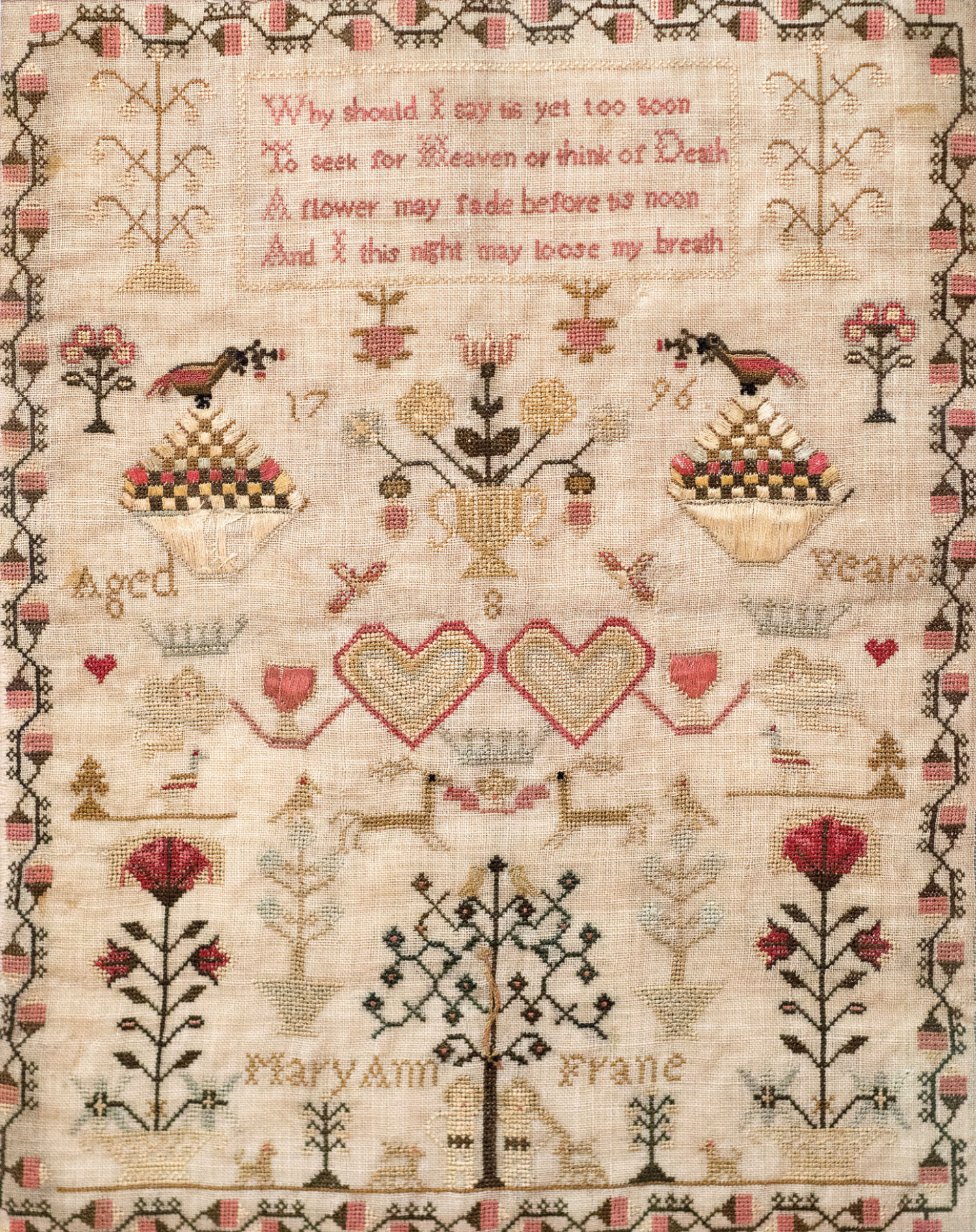
Photo by Morgan Ford
Sassy Jacks Stitchery displays embroidery samplers more than 300 years old. But shop owner Kim Young’s mission is to keep the ancient craft alive by introducing newbies to it at every turn.
A corporate-world escapee, Young spent years working as an international comptroller, living at times in Rotterdam, London, and, most recently, the British Virgin Islands. She likes to reveal the bones of the art — stitchery’s complicated history.

Photo by Morgan Ford
“Examples of embroidery have been found in Egyptian tombs,” says Young. Her unrivaled collection of European and early American samplers includes a prized example from 1699. Complex pieces stitched with silk threading came out of 17th- and 18th-century embroidery hotspots Germany and Holland. Prototypes contained stitch patterns meant for clothing and furniture. Young notes that “Mary Queen of Scots and Elizabeth I were both noted embroiderists whose work still amazes.”
Gentle hues, religious symbology, and classic alphabetical and numerical motifs were common. “Creating samplers allowed a girl of 8 to 12 to learn a feminine art,” shares Young. They were also, she says, “a type of pre-courting currency. A potential suitor and his mother would review samplers — thought to indicate a girl’s household-management abilities — to determine if an in-person meeting would occur.”
She explains that girls were taught embroidering in orphanages, as well. In many cases, it provided an advantage for poor children in the era’s brutal class system. The skill qualified its practitioner for service as a lady’s maid, stitching identifying symbols or monograms on an affluent family’s linens.

Photos by Morgan Ford
One of the shop’s hottest commodities is its in-house design line Sassafras Samplers, booklets where original sampler patterns are charted, the original maker’s history is shared, and stitch types — from “fishbone” to “Algerian eyelet” — are presented. Modern embroiderists will recreate the entire piece, while beginners can stitch just a motif using a smaller chart card.
Embroidery is enjoying a robust renaissance, especially among millennials, according to Young: “They can escape isolation, technology’s main side effect, by stitching.” The communal aspect makes it “as much fellowship as craft.” In fact, the shop’s “Seriously Sassy” brand targets this younger demographic; the product line features hip Satsuma Street designs for cross stitch and snarky stitchable sayings such as “Warning: This is proof I have the patience to stab something 1,000 times.” The shop is also publishing portions of Macbeth’s “Song of the Witches” (“Boil, boil, toil and trouble…”) as a seasonal project, with beautiful borders they found from Scottish charts. Young praises 23-year-old creative director and top-notch weaver Allie Dudley for keeping up with what appeals to stitchery-minded millennials: “She’s been instrumental in pushing our shop forward through technology and media goals that set us apart from other shops in the industry.”
Young views needle art as essential to civilization. “The original pieces and our reproductions reflect an important cultural moment,” she says, “and the act of stitching provides the ultimate stress relief. Our aim is to get stitching needles in as many people’s hands as possible.”

Photo by Morgan Ford
Kim Young, Sassy Jacks Stitchery, 30 N. Main St., Weaverville. For more information, call 828-785-4405 or see sassyjacksstitchery.com. The shop will release more in its line of Sassafras chart booklets this month, and in 2019 will move operations to the historic Baird House, located at 446 Weaverville Road in Woodfin. Check the Facebook page for updates, or follow the shop on Instagram: @sassyjacksstitchery.
Congrats! Love the house. You inspire me! Thank you!
Sassy Jacks also gives AWESOME customer service.